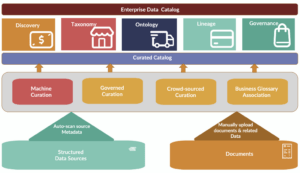The Health Resources and Services Administration (HRSA) 340B program plays a vital role in expanding access to affordable medications for eligible patients. To ensure compliance with program requirements, covered entities (CEs) must maintain accurate records and documentation. Amidst these complexities, where every decision directly impacts patient care and financial sustainability, adherence to regulatory standards is non-negotiable. For entities participating in the 340B Drug Pricing Program, the stakes are exceptionally high. As of 2023, over 12,000 covered entities are enrolled in the 340B program, serving approximately 10 million patients annually.
Collectively, these entities save billions of dollars each year, contributing significantly to the accessibility and affordability of medications for underserved populations. In these crucial contributions, ensuring compliance with 340B program requirements becomes paramount. Yet, meeting these standards, especially during the 340B HRSA audit, can take time for healthcare organizations. Now, let’s take a closer look at the challenges of the 340B HRSA audit.
Addressing 340B HRSA audit challenges
- Complexity of Program Requirements: Auditors face difficulties in interpreting and applying 340B’s complex requirements. Staying informed about the changes in the program is essential for maintaining effective compliance audits.
- Variability Across Covered Entities: Auditors encounter challenges in adapting to the diverse quantity, structure, and complexity of data, as well as differing data collection procedures across entities.
- Data Accessibility and Accuracy: The challenge lies in ensuring data accuracy across covered entities, given their diverse systems and resource limitations, emphasizing the critical importance of data reliability in audits.
- Resource Limitations: Conducting HRSA audits demands resources like time, staff, and expertise. Both HRSA auditors and covered entities may face limitations, affecting audit frequency and scope.
Steps to consider for HRSA audit excellence
Step 1: Establish Comprehensive Documentation Practices
To ensure everything in the 340B program is well-documented, it’s essential to have thorough documentation procedures. A study by HRSA found that about 30% of audits faced issues due to poor documentation. Inadequate documentation can lead to non-compliance findings. So, by ensuring documentation practices are comprehensive, organizations can avoid these problems and keep everything transparent.
Step 2: Conduct Regular Internal Audits
Regular internal audits play a crucial role in identifying potential compliance issues within organizations, reducing the likelihood of facing compliance issues during 340B HRSA audits by 40%. These audits not only reinforce compliance but also lead to process improvements, as reported by 70% of organizations. This, in turn, enhances operational efficiency in patient care delivery, showcasing the multifaceted benefits of incorporating regular internal audits into organizational practices.
Step 3: Verify Registration and Eligibility
Neglecting healthcare registration details can have financial consequences, with HRSA data indicating that 15% of entities experience registration discrepancies, resulting in delays and penalties. Audits unveil up to 20% non-compliance in mixed-use and contract pharmacies. Therefore, meticulous scrutiny and vigilant verification of registration details are essential to uphold program integrity, ensure accuracy and compliance, and avoid potential penalties during 340B HRSA audits.
Step 4: Review and Enhance Compliance Protocols
For a successful 340B program, having strong compliance rules is a must. Surveys show that organizations with clear rules have a 60% higher chance of passing audits. Sadly, 25% of organizations lack essential rules for managing inventory and determining eligibility. To ensure everything stays on track, organizations should regularly check and improve their rules, especially in inventory and eligibility processes. This helps prevent mistakes and keeps the program working well.
Wrapping Up
In the high-stakes world of healthcare, the 340B HRSA audit is not just a regulatory requirement – it is a strategic imperative. With billions of dollars at stake and millions of patients relying on the 340B program for access to affordable medications, compliance is non-negotiable. By following the four steps outlined in this blog – establishing comprehensive documentation practices, conducting regular internal audits, verifying registration and eligibility, and reviewing and enhancing compliance protocols – organizations can unlock success in the 340B program. Ultimately, audits aren’t just about compliance – they’re about ensuring that every patient receives the care they deserve, regardless of their socioeconomic status.



